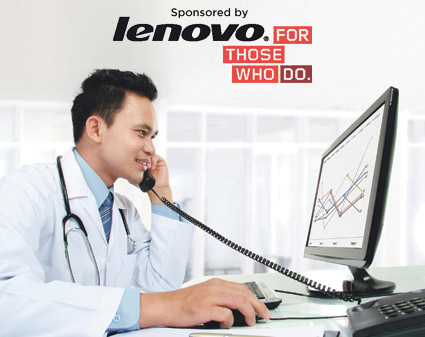Using an ‘airline model’ for healthcare monitoring
PRIME – April 2015
By Gary M. Kaye
Editor, Tech50+ (
www.tech50plus.com)
Imagine for a moment a brand new $100 million hospital currently being built in the Midwest. It will be staffed by hundreds of fully qualified doctors and nurses. But it will have no beds. That doesn’t mean it has no patients. It will have thousands of patients.
Dr. James Mault, the vice president of Qualcomm Life and chief medical officer of HealthyCircles said it should be open within the next three months.
I don’t know the specifics of where it is being built, or who will operate it. I can tell you that it will be the first real 21st century healthcare facility, and likely will become the revolutionary standard for remote healthcare monitoring.
It will cover Intensive Care Units in more traditional hospitals, as well as assisted living facilities, and even home bound patients. And it will use the model that Mault said reflects the system created by the airline industry.
Chronic care management by exception
Remember the days when you made an airline reservation by calling the air carrier or a travel agent? You got on the phone and someone on the other end would give you what was generally a pretty limited list of available flights that would get you where you wanted to go. But then the world changed. Airlines all built their own computerized reservation systems, allowing you to pick any of their flights. Even better sites like Kayak came along showing you options for just about all available flights.
The bottom line is that very few of us now speak with an airline reservation clerk. Generally you’ll only speak with the reservations agent if there’s a problem – a last minute cancellation, bad weather, a late change in plans. This is management by exception. You only interact with another human being when something goes wrong. For the vast majority of transactions, it’s just you and the computer system.
Mault predicts that the same will pretty much hold true when it comes to chronic health care monitoring.
There are several reasons why this looks like an inevitability. The first is simply the growing number of Americans with chronic health issues such as diabetes, congestive health failure, and Chronic obstructive pulmonary disease (COPD) amongst others. The numbers run into the 10s of millions.
The second is the growing body of evidence that remote health monitoring of chronic populations leads to dramatic reductions in the number of hospital re-admissions by these patients through early intervention. By using sensors coupled with wireless monitors to measure vital signs such as weight, heartrate, blood pressure, blood glucose and even pillbox sensors for medication compliance, it becomes easier to keep track of how these patients are doing. And finally there was the decision by the federal government earlier this year to allow Medicare to reimburse non touch medical visits. Now that the government has done it we expect private insurers to follow suit.
How it works
In the bedless hospital, doctors and nurses will monitor large numbers of patients on banks of LCD screens. It is impractical for them to interact with every patient every day. There just won’t be enough resources. Computers will monitor the vital signs for every patient. The healthcare practitioners will only be alerted if readings go outside the normal limits. Then they’ll be able to intervene perhaps by making a phone call, perhaps by remotely changing medications, or by scheduling a direct patient – practitioner contact.
In the end, it means that patients who are at risk can be spotted before they require a costly hospital readmission. The net result should be a dramatic savings in the cost per patient of monitoring these chronic populations.
Bottom line is that we’re embarking on a revolution in health care monitoring for large chronic populations.
Could there be errors? No doubt. But with advances in drug delivery systems and improvements in wireless monitoring, this appears to be the wave of the future, and one which should improve the delivery of healthcare services at a price that won’t bankrupt the system.
Gary Kaye is the creator of Tech50+ (www.tech50plus.com), the leading website covering technology from the Baby Boomer perspective. Kaye has been covering high tech for more than 30 years with outlets including NBC, ABC, CNN and Fox Business. He is a regular contributor to AARP and other websites on issues regarding the nexus of technology, seniors and baby boomers.

